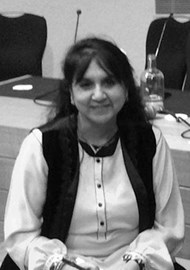This paper is an analysis of data extracted from 13 eligible studies in the context of neovascular age-related macular degeneration (nAMD), diabetic macular edema (DME), and retinal vein occlusion (RVO), collected from systematic literature search of MEDLINE, Embase, and Cochrane Library observational studies and randomised control trials (RCTs) published from 2015 to July 2024. It compares the safety and efficacy of intravitreal anti- monotherapy VEGF to Faricimab, a newer bispecific anti-VEGF / Angiotensin 2 (Ang2) agent. The data has indicated that at baseline, 2226 (42.42%) eyes were treated with anti-VEGF monotherapy and 3022 (57.58%) were treated with a bispecific anti-VEGF / Ang2 agent. Two-fifths (41.31%) of the eyes had DME, 34.26% had nAMD, and 24.43% had RVO. Faricimab was used in 3022 (57.58%) eyes, aflibercept in 2015 (38.40%), ranibizumab in 238 (3.32%), and brolucizumab in 37 (0.71%). At baseline, the mean age of participants was 67.58 ±6.51 years (range 60.5–80.3); 51.65 ±9.88% were male (range 26.09–78.57), 48.35% were female; 76.16 ±16.18% were Caucasian (n=5142; range 0–100), 50.73 ±2.39% were right eyes (n=4502; range 45.05–54.15), 10.96 ±19.41% of study eyes had prior anti-VEGF treatment (range 0–100%), and 71.85 ±13.02% were phakic (n=4608; range 17.86–86.5). Change in best-corrected visual acuity (BCVA, ETDRS letters), change in central subfield thickness (CSFT, μm), and presence of retinal fluid were primary endpoints; ocular adverse events were secondary endpoints. Mean baseline BCVA was 59.00 ±4.22 ETDRS letters (range 47.5–67.0; faricimab vs monospecific anti-VEGF, p=0.66 and WMD 0.29 [−0.98, 1.56]; p>0.05 for baseline BCVA data separated by disease type), mean baseline CSFT was 485.64 ±112.60μm (range 353.1–721.1; faricimab vs monospecific anti-VEGF, p=0.80 and WMD −1.06 [−9.15, 7.02]; p>0.05 for baseline CSFT data separated by disease type), 53.01 ±19.57% had SRF (n=3860; range 31–100%), and 77.62 ±27.65% had IRF (n=3860; range 16.22–100%). The weighted mean follow-up time per eye was 76.33 ±38.56 weeks in the faricimab cohort and 62.82 ±38.80 weeks in the anti-VEGF monotherapy group. The study concluded that there was no difference in BCVA between faricimab and anti-VEGF monotherapy in nAMD, DME, and RVO. While faricimab offered superior improvement in central subfield thickness at final follow-up for DME and RVO eyes, this effect was not seen in nAMD eyes. The incidence of ocular adverse events was similar between groups. Limitations: most of outcomes for eyes with DME and nAMD were associated with a moderate to high level of certainty on GRADE evaluation. Despite a large population of eyes, data on RVO were graded as low certainty of evidence given all data came from two RCTs which were published in the same manuscript. All the included RCTs in the analysis may have potentially introduced a selection bias as reviewers of patient data in some observational studies were not blinded to the treatment received, and exclusion criteria were not standardised between all included studies. There was insufficient available data to stratify results based on drug, dose of drug, number of injections, study type, disease subtypes, and follow-up times given limited data availability.
Efficacy and safety of intravitreal faricimab in nAMD, DME and RVO
Reviewed by Sofia Rokerya
Efficacy and safety of intravitreal faricimab in neovascular age related macular degeneration, diabetic macular edema, and retinal vein occlusion: a meta-analysis.
CONTRIBUTOR
Sofia Rokerya
MBBS MRCOphth FRCSI, King's College University Hospital, UK.
View Full Profile



